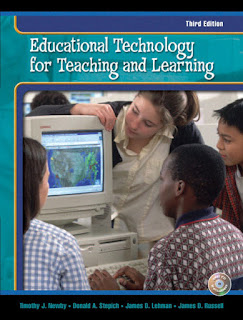It is suited to distance learning and in conjunction with face-to-face teaching, which is termed blended learning. Educational technology is used by learners and educators in homes, schools (both K-12 and higher education), businesses, and other settings.
Educational technology is the effective use of technological tools in learning. As a concept, it concerns an array of tools, such as media, machines and networking hardware, as well as considering theoretical perspectives for their effective application.
Educational technology is not restricted to high technology. Nonetheless, electronic educational technology has become an important part of society today.
Modern educational technology includes (and is broadly synonymous with) e-learning, instructional technology, information and communication technology (ICT) in education.
EdTech, learning technology, multimedia learning, technology-enhanced learning (TEL), computer-based instruction (CBI), computer managed instruction, computer-based training (CBT), computer-assisted instruction or computer-aided instruction (CAI), internet-based training (IBT),
flexible learning, web-based training (WBT), online education, virtual education, personal learning environments, networked learning, virtual learning environments (VLE) (which are also called learning platforms), m-learning, and digital education.
These labels have been variously used and understood, and conflate to the broad domain of educational technology and e-learning.
These alternative descriptive terms are all more restrictive than "educational technology" in that they individually emphasize a particular digitization approach, component or delivery method. For example, m-learning emphasizes mobility, but is otherwise indistinguishable in principle from educational technology.
Theoretical perspectives and scientific testing may influence instructional design. The application of theories of human behavior to educational technology derives input from instructional theory, learning theory, educational psychology,media psychology and human performance technology.
Educational technology includes numerous types of media that deliver text, audio, images, animation, and streaming video, and includes technology applications and processes such as audio or video tape, satellite TV, CD-ROM, and computer-based learning, as well as local intranet/extranet and web-based learning.
Information and communication systems, whether free-standing or based on either local networks or the Internet in networked learning, underlie many e-learning processes.
Educational technology and e-learning can occur in or out of the classroom. It can be self-paced, asynchronous learning or may be instructor-led, synchronous learning.
